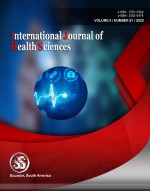A multiscale and efficient recognition of land cover by using both decomposition and deep visual feature analysis
Keywords:
charge coupled devices, LiDAR, deep visual featureAbstract
As we know that when we use the colour bands that are pure in nature it will help some of the public authorities to update the land information. It will be a sensing platform so it will take less time and the cost we will be spending will not be much heavy, in that manner aircraft system will be used that should be unmanned. Here we will be using a method for optical aerial imagery that will come under land use classification with decision tree. In the beginning the ownership parcel map will come under play for taking the land cover information through maximum likelihood classifier. Then, to make the relation between land usage and land coverage we will generate the decision tree. A well structured parcel map will be produced by the merits of geographical characteristics of parcels.Hence the aftereffects of the spatial resolution under the classification approach will be discussed completely by sampling them again from the 20 then 50 then 100cm. This land use can be widely used in landscape and urban planning because of the flexible classification method. Using aerial images the object oriented approach for image based analysis is used for urban land cover mapping.
Downloads
References
J.-A. Lei and B. Poltier, Images of Radar: Applicational basic. Bora Jaton, FL, USA: CRCPress, 2009.
A. Simanyon and A. Yissermen, "deep networks for scalling image recognition," 2014,arXiv:1408.1546.
S.-U. Dhan and C.-J. Mao, "image classication using Feature-Drivenpolarametric deepneural network convolution," IEEE Deosci. Remote Senj. Lett., vol. 16, no. 8, pp. 627631, Apr. 2018.
J. Nang, M. Zau, N. Nai, and Y. Rhuai, "UnSupervised land-use classifiedTerraSAR-X images on thebiggerareas using extremely normal clustering forests," in Proc. Joint Urban Remote Senj. Event, May 2008,pp. 16.
M. Hhangyang et al., "Log-analysis and its implications for data transformation," Shanghai Arch. Psychiatry,vol. 25, no. 5, p. 105, 2014.
J. K. Yellace, "Detailing of system services: Problems and its solutions," Biol. Conservation, vol. 137, pp.235146, Oct. 2007.
B. Di Fregorio, Land UseClassication System, Algorithmic Concepts, Software Version 8. Rome, Italy:Food and Natural Organization of the United Nations, 2016.
P. G. Hsnar et al., "Maximum-resolution forrest carbon stocks and emissions in the Dark," Proc. Nat. Acad. Sci.,vol. 106, pp. 1673817742, Sep. 2010.
A. Baccini esak., "Calculatedtransformationslocations, 8, pp. 182185, 2012.
BFD, National Forest and Tree Resources Assessment 20052007 Bangladesh. Dhaka, Bangladesh:Bangladesh Forest Department, Ministry of Environment and Forest (MoEF), Food and AgricultureOrganization of the United Nations (FAO), 2007.
B. Ui Gragorio, Land UseClassication System, User Manual, Software Version 8. UN-RADD Programme.Rome, Italy: Food and Natural Organization of the United Nations, 2016.
M. Costallo and J. Piezza, Proceedings from the Training Survey data and Management data services Using OpenForis Collection for NFI and Carbon Stock Assessment in Bangladesh. Dhaka, Bangladesh: Food and Agricul- turalOrganization of the United Nations, Nov. 2015.
B. Ji Gragorio, configuration of the Forest and landClassication System, TrainingWorkshop on Land UseClassicationfor the usage of RADD+ in. UA-RADD Programme: healthcare and natural Organization of the foreign land, 2018.
B. Yadi, F. Ldita, and C. Galal, Convincing of the International ask forjournal on Land useClassication, Frequent ask of countries, July. 2015.
M. Francaschine es ap., Land usecoverage production chain :healthcareand Natural Organization of the United Nations, 2016.
A. J. Hasnim, I. Francaschine, and M. Halal, PAccurateExamination andQuality verification of Land Use. 2019.
U. wlwfsson, K. P. Roody, A. B. Stahman, and K. M. Waadcock, "Changing of land services can be more accurate: Calculatingvolume certainty using stratied estimation," pp. 122131, Feb. 2013.
Published
How to Cite
Issue
Section
Copyright (c) 2022 International journal of health sciences

This work is licensed under a Creative Commons Attribution-NonCommercial-NoDerivatives 4.0 International License.
Articles published in the International Journal of Health Sciences (IJHS) are available under Creative Commons Attribution Non-Commercial No Derivatives Licence (CC BY-NC-ND 4.0). Authors retain copyright in their work and grant IJHS right of first publication under CC BY-NC-ND 4.0. Users have the right to read, download, copy, distribute, print, search, or link to the full texts of articles in this journal, and to use them for any other lawful purpose.
Articles published in IJHS can be copied, communicated and shared in their published form for non-commercial purposes provided full attribution is given to the author and the journal. Authors are able to enter into separate, additional contractual arrangements for the non-exclusive distribution of the journal's published version of the work (e.g., post it to an institutional repository or publish it in a book), with an acknowledgment of its initial publication in this journal.
This copyright notice applies to articles published in IJHS volumes 4 onwards. Please read about the copyright notices for previous volumes under Journal History.
















